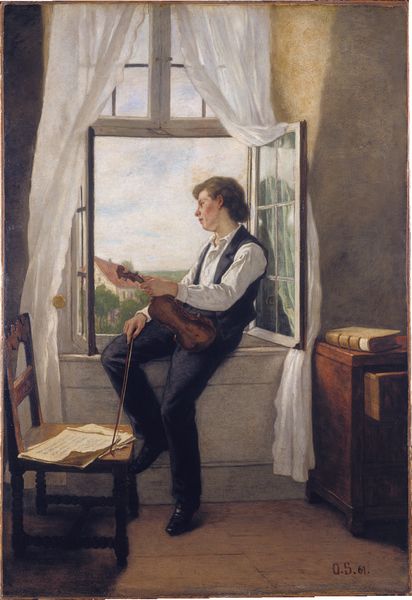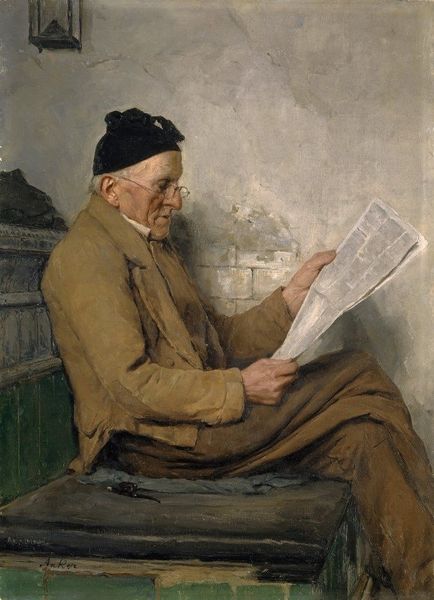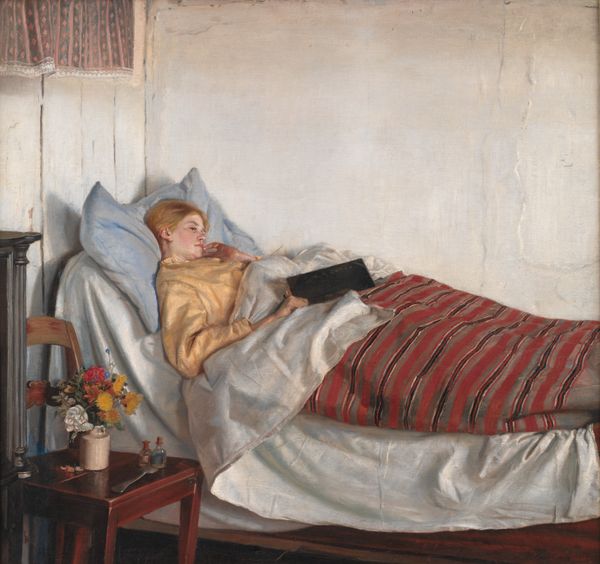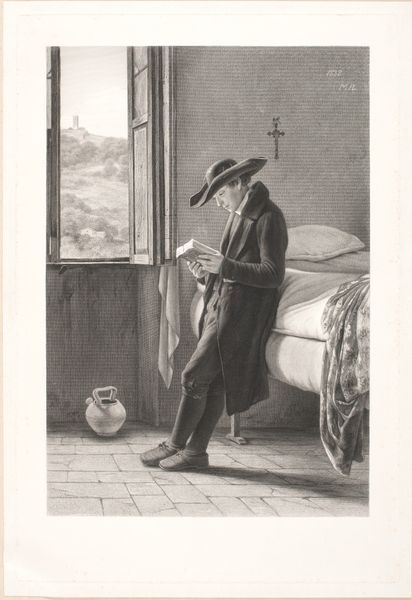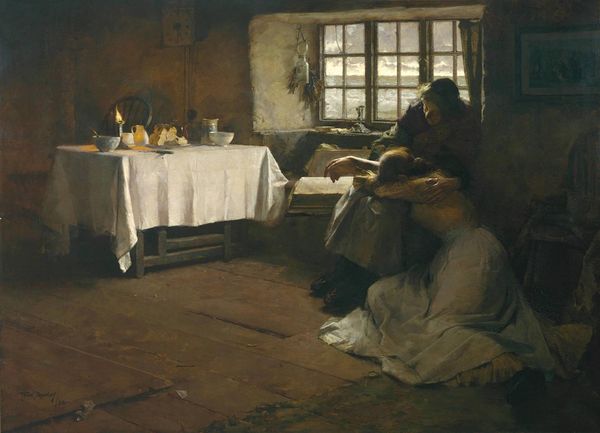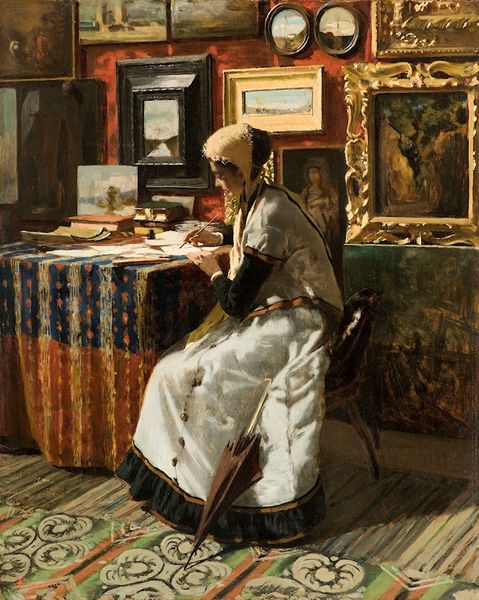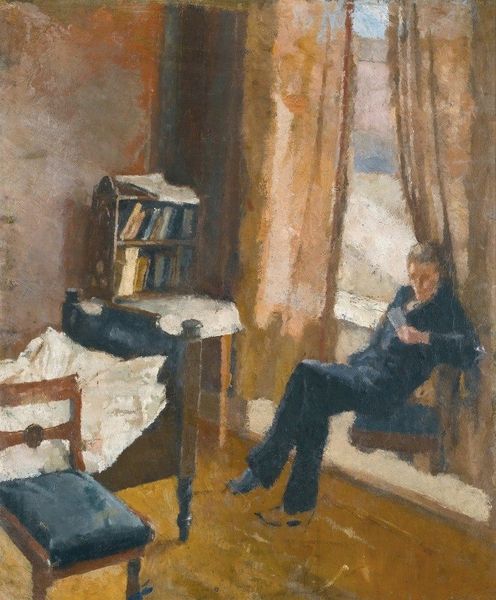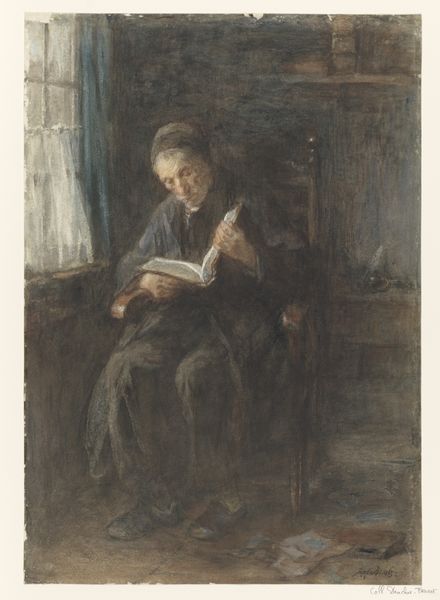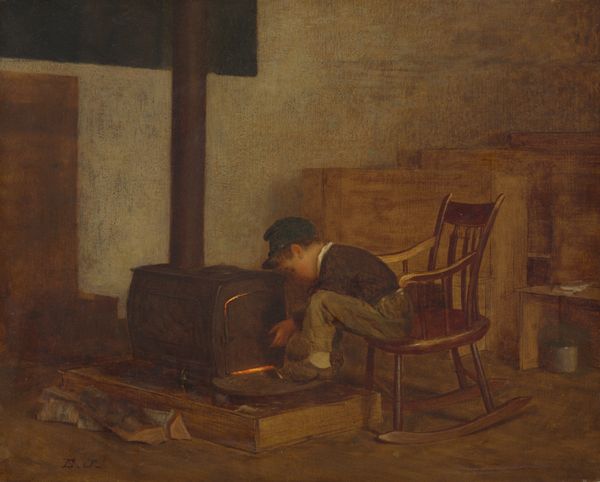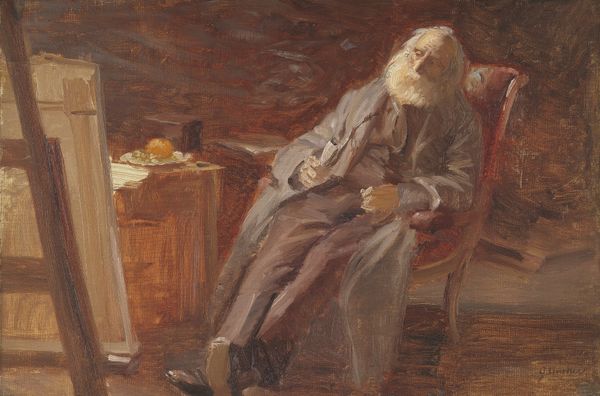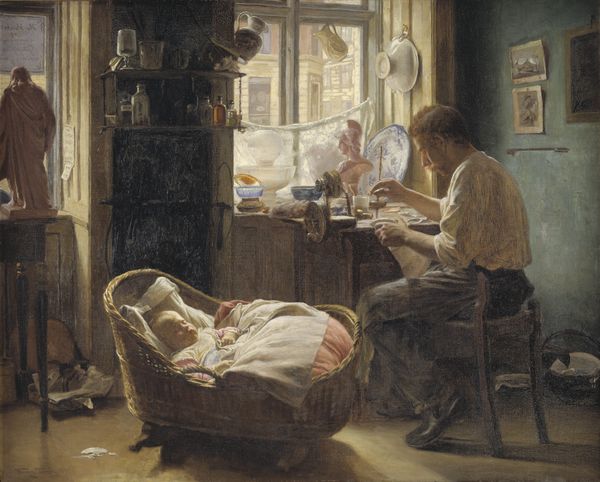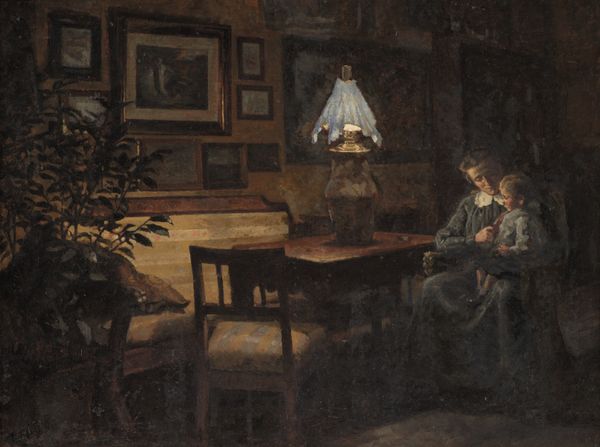
sculpture
#
portrait subject
#
possibly oil pastel
#
oil painting
#
portrait reference
#
portrait head and shoulder
#
underpainting
#
sculpture
#
painting painterly
#
portrait drawing
#
portrait art
#
digital portrait
Dimensions: 39 × 27.5 cm (15 3/8 × 10 13/16 in.)
Copyright: Public Domain
Curator: Ah, isn't that evocative? I see solitude, a kind of pensive stillness, don't you think? It’s like a whisper of thought caught on canvas. Editor: It certainly has a quiet intensity. This is Martinus Rørbye’s "Young Clergyman Reading," painted in 1836. It’s an oil on canvas, and as you mentioned, immediately strikes one as meditative, concerned with interiority. Curator: Interiority framed, quite literally, by the window and the distant landscape beyond. It positions the young clergyman within a specific geographical and socio-cultural context, reflecting Denmark's burgeoning national identity. His gaze directed towards the text suggests an engagement with knowledge, perhaps shaping his own evolving understanding of the world. Editor: Right! He’s immersed, though the book seems almost secondary. I'm captivated by his figure, though: the slightly oversized hat throwing a shadow across his face... He seems hesitant somehow, caught between the calling of his faith and some personal, internal struggle, maybe even a nascent desire for something more than what he knows. Curator: It's fascinating that you read hesitation there. Consider the ecclesiastical history, particularly the Danish context of the 1830s: intense debates around religious dogma were intersecting with new currents of secular thought. The clergyman's focused study, therefore, is potentially a confrontation with orthodoxy itself. It brings in power dynamics as the state's religion faced a range of contestations. Editor: Interesting, so you see a quiet rebel in waiting? Maybe he's reading subversive pamphlets! What resonates with me, regardless of the historical specifics, is a timelessness of the image itself: that feeling of being on the cusp of something, a path opening up. It’s as human today as it was then. Curator: Precisely! Rørbye captures the universal moment of self-reckoning. It invites the viewer to reflect on those transformative moments of learning and discovery. Editor: I'll definitely remember the thoughtfulness of the piece!
Comments
No comments
Be the first to comment and join the conversation on the ultimate creative platform.
